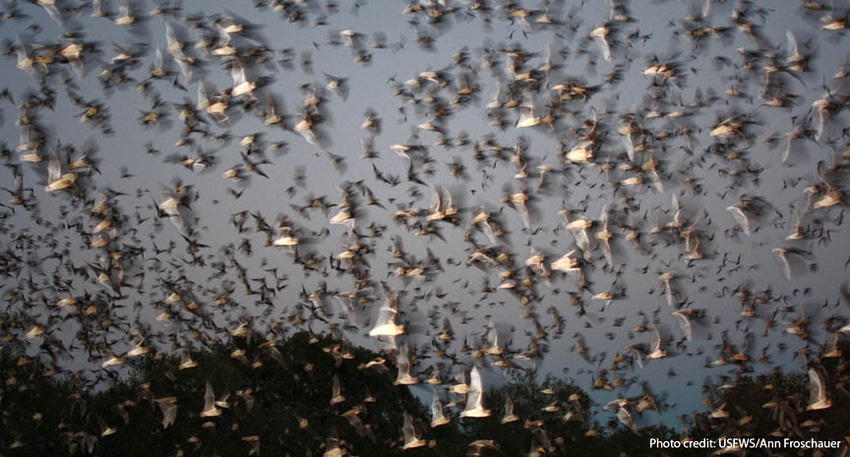August 9, 2013

Little bats play a giant role in agriculture.
They account for approximately a quarter of all mammals — a massive army that operates as the scourge of the insect world. Their appetite for insect destruction translates to about $3.7 billion worth of pest control in North America each year, and that estimate is probably on the low end.
Moths, beetles, stink bugs, leafhoppers and the rest — bats consume the crop-eaters without much discrimination. (Bats also pollinate over 300 types of fruit across the globe.)
From a 2011 report in Science: “Estimating the economic importance of bats in agricultural systems is challenging, but published estimates of the value of pest suppression services provided by bats ranges from about $12 to $173/acre (with a most likely scenario of $74/acre) in a cotton-dominated agricultural landscape in south-central Texas.”
The authors of the Science study (Economic Importance of Bats in Agriculture) extrapolated the Texas figures across the United States and estimated the value of bats to agriculture to be “as low as $3.7 billion/year and as high as $53 billion/year. These estimates include the reduced costs of pesticide applications that are not needed to suppress the insects consumed by bats.” The dollar value estimate doesn’t include environmental or timber industry savings.
Despite their natural pest control service, disease has taken a toll on the U.S. bat population over the last few years. White-nose syndrome was first detected in 2006 and has spread quickly across the U.S. and Canada — 22 states and five provinces. From HuffPo: “White-nose syndrome can wipe out 90 percent of bats in a cave. It continues to spread and infect bat caves across the U.S. Scientists are still on the hunt for the source of the powdery white fungus that often coats the muzzles of its victims.”
White-nose syndrome has already killed millions of bats in the Northeast (the 2006 initial detection occurred in New York) and that equates to millions of metric tons of insects not consumed by bats. And it’s a reasonable assumption that the agricultural value of bats is vastly greater in other parts of the U.S when compared to the Northeast.
With 1,200 species worldwide, the value of bats to global agriculture is beyond value. From Justin Boyles, lead author of the Science report: “Bats eat tremendous quantities of flying pest insects, so the loss of bats is likely to have long-term effects on agricultural and ecological systems. Consequently, not only is the conservation of bats important for the well-being of ecosystems, but it is also in the best interest of national and international economies.”
Follow me on Twitter: @CBennett71
Blog archive
Vile dog meat markets still thriving in China
Bull market, bitter legacy for opium farmers
Buffalo bone fertilizer — forgotten days of agriculture
Agriculture waiting on Silicon Valley moment
Brad Kelley, the farm boy with 1 million acres
Pigeon racing the new sport of kings
Agriculture apocalypse just around bend, again
DIY biotech a glowing minefield for USDA
Meteorite find a golden harvest for farmer
Wild dog plague crushing livestock industry
Days of wine auctions and gay marriage
Agriculture's burden of technological intolerance
Nuggets of wisdom from the March Against Monsanto
Farmer’s death puts national focus on killer bees
Cliff Young — the farmer who outran the field
Wine skeptic takes on climate change report
PETA drones a trophy prize for US hunters
Biggest wine hoax in history reveals trade secrets
You May Also Like




